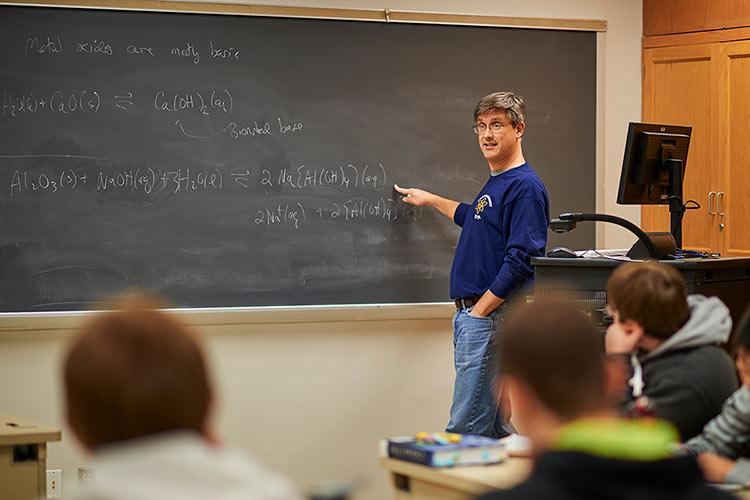Deep in the forest, the same chemicals that give pine trees their smell might have a powerful effect on climate change.
Sunlight can convert those naturally occurring molecules into secondary organic aerosol (SOA) particles with the potential to change local cloud cover and rainfall patterns. SOAs also help to determine how much sunlight reaches Earth and how much longwave radiation escapes.
Professor Ephraim Woods, chemistry department chair, is training high-powered lasers on aerosols to see if molecules like pinene, limonene, and isoprene can form SOA with the sun’s help. Backed by a $285,500 grant from the National Science Foundation, Woods and his student research team measure the lifetime of the short-lived chemical species that spark these reactions, as well as how much particulate organic matter they create. The goal is to determine which conditions promote the formation of SOA particles.
A single ultraviolet pulse allows the team to spur a photochemical reaction that might lead to particle growth. If so, they’ve got just a few nanoseconds to monitor the miniscule, highly unstable species using the light of a second laser pulse.
“Our experiment provides a new way to monitor these reactions,” said Woods. “The potential effect of these reactions on the environment is greater the longer these reactive species exist, but how long they last depends on what else is in the neighborhood.”
Woods tasks his students with setting up technically challenging experiments that vary the particles’ organic composition or the pressure at which the chemicals are studied.
“Our students are very much partners in the work,” he said. “They become quite sophisticated in their approach to it.”
For Woods, giving undergraduates a chance to collect and help interpret the data is equally as important as his research findings. “Working with student researchers is my favorite part of my job,” he said. “It engages students in problem solving and connects them with a broader scientific community.”
Related:
Student research
Chemistry Department
National Science Foundation grants foster faculty research
